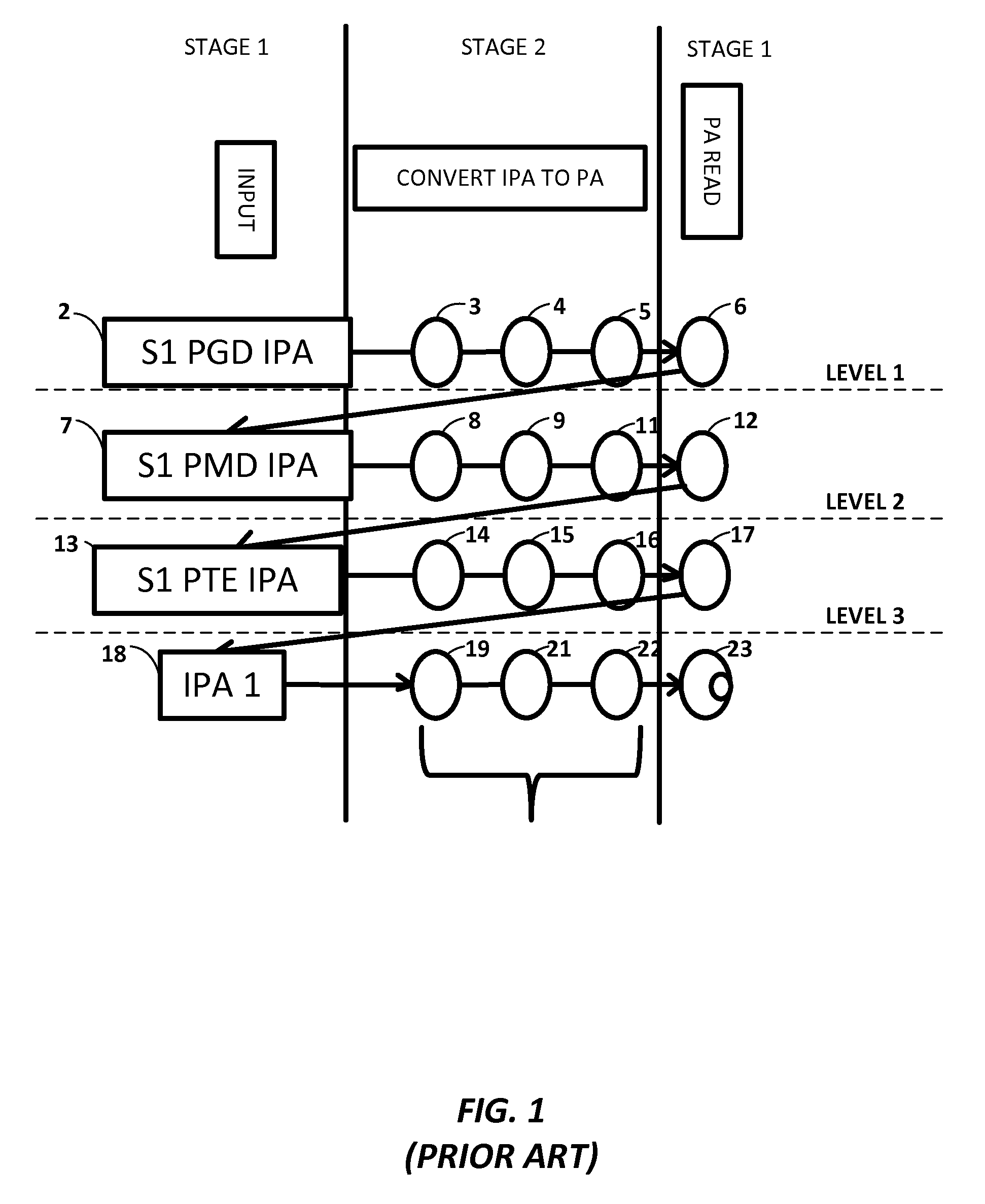Methods and systems for reducing the amount of time and computing resources that are required to perform a hardware table walk (HWTW)
a hardware table walk and computing resource technology, applied in the field of computer systems, can solve the problems of performance penalties, significant computational overhead for the mmu, time-consuming and computationally-expensive hwtw process, etc., and achieve the effect of reducing the amount of time and computing resources
- Summary
- Abstract
- Description
- Claims
- Application Information
AI Technical Summary
Benefits of technology
Problems solved by technology
Method used
Image
Examples
Embodiment Construction
[0026]In accordance with illustrative embodiments described herein, a computer system and a method for use in a computer system are provided for reducing the amount of time and computing resources that are required to perform a HWTW. In accordance with embodiments described herein, when a TLB miss occurs when performing a S2 HWTW to find the PA at which a S1 page table is stored, the MMU uses the IPA to predict the corresponding PA, thereby avoiding the need to perform any of the S2 table lookups. This greatly reduces the number of lookups that need to be performed when performing these types of HWTW read transactions, which greatly reduces processing overhead and performance penalties associated with performing these types of transactions.
[0027]FIG. 2 illustrates a block diagram of a computer system 100 in accordance with an illustrative, or exemplary, embodiment configured to perform the method for reducing the amount of time and computing resources that are required to perform a ...
PUM
 Login to View More
Login to View More Abstract
Description
Claims
Application Information
 Login to View More
Login to View More - R&D
- Intellectual Property
- Life Sciences
- Materials
- Tech Scout
- Unparalleled Data Quality
- Higher Quality Content
- 60% Fewer Hallucinations
Browse by: Latest US Patents, China's latest patents, Technical Efficacy Thesaurus, Application Domain, Technology Topic, Popular Technical Reports.
© 2025 PatSnap. All rights reserved.Legal|Privacy policy|Modern Slavery Act Transparency Statement|Sitemap|About US| Contact US: help@patsnap.com



